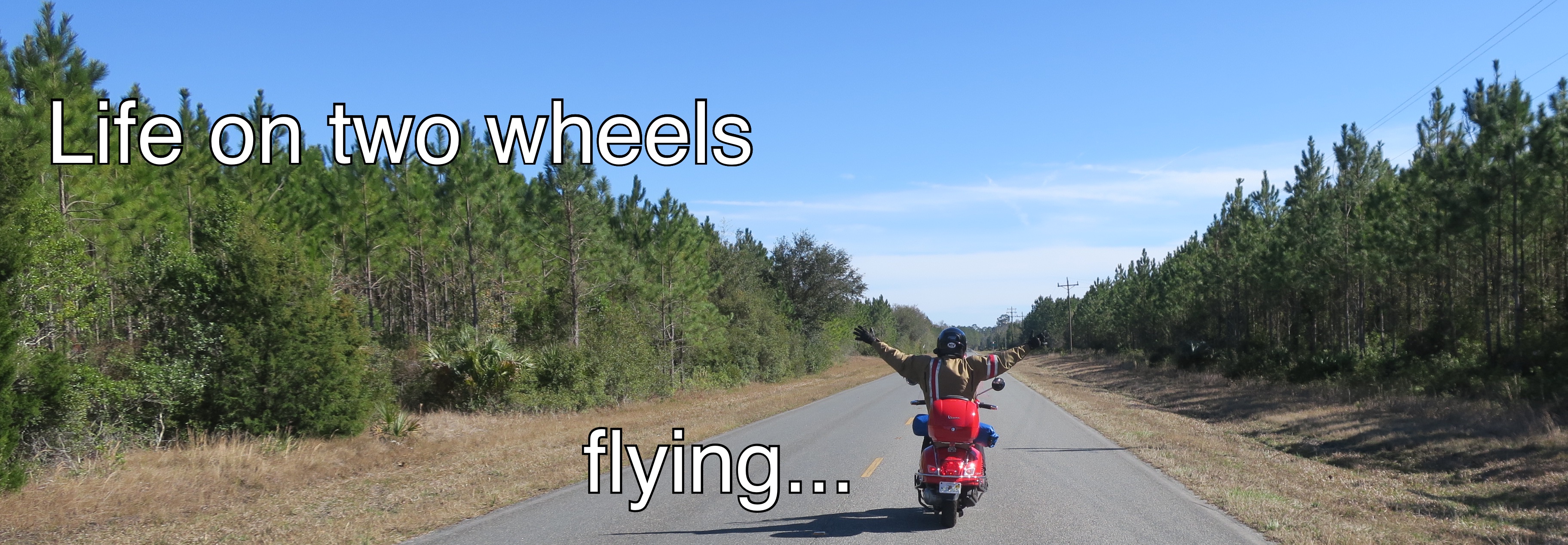The easy decision was to buy a Vespa LX150. The next challenge was to find one for the best price.
After a little research, the online classified sites seemed the best way to find a suitable scooter. After spending a little time comparing listings, I found that Kijiji.ca had a lot more listings of potentially interesting scooters than Craigslist. So last fall I began to monitor Kijiji almost daily. I found that the most convenient way to keep tabs on listings was to save the Kijiji search to my Ipod Touch's home screen.
Since the Montreal market had few offerings I broadened the search radius to 600km to take in the greater Toronto market as well.
After watching asking prices for many weeks I got a good feel for the market for used Vespas.
By early February I was ready to make an offer. I missed out on a few candidates but finally got lucky. I purchased my scooter from Ocean Drive Motors (
www.oceandrivemotors.com), a dealer specializing in used Italian sports cars and Vespas located in Toronto.
Purchasing from a licensed used car dealer made many aspects of the purchase easier. For one thing I knew that I wouldn't have to worry about title. I still did a personal property security search on the Ontario government's web site though, just to be sure.
The price for the scooter was a little higher than comparable private sellers, but there were some desirable accessories included in the sale, including a Vespa OEM top case, that clinched the deal. I was also able to negotiate free storage until I could figure out how to get the scooter to make the 500km trip to Montreal.
The fall-back plan was to ride it home.
Ultimately with a favour from my brother in law who was comimg to Ottawa with an empty trailer to get some tools, I was able to pick up the scooter in Ottawa with a rented U-Haul trailer and drive the final 180km back home.
Trailering the scooter in the open U-Haul was a breeze. The 10'X12' trailer's tail gate lowered to act as a ramp so loading the scooter was easy. I got all the information I needed from the Modern Vespa forum about transporting a Vespa scooter safely. I purchased a motorcycle handlebar harness from a local motorsports dealer and some motorcycle and ATV tie downs from Canadian Tire. I tied down the scooter fore and aft to the sturdy D rings on either side of the trailer bed and I chocked the front tire with a section of 4X4. With the tie downs tightened the scooter was rock solid in the trailer, even though it was not on the centre stand. Trailering a scooter on its stand can damage both the scooter and the trailer as bumps and vibration cause the stand to hammer the trailer bed. It also prevents the scooter's suspensiom from doing its job absorbing the bumps.
The drive to Montreal was uneventful. My son drove the Ford Escape SUV and I kept an eye on the trailer. There was really no need to be concerned though. The scooter never budged an inch.
The next Monday I drove the scooter from my home to the local CAA inspection facility for its government inspection (which it passed with flying colours) and then on to the motor vehicle department to get it registered.
I had carefully researched the registration requirements beforehand so the process went as smooth as silk. I had all I needed:
1) The contract of sale;
2) The dealer's registration slip endorsed for transfer to me;
3) My driver's license with the motorcycle Class 6A endorsement; and finally,
4) The official inspection report.
That night I installed the license plate when I got home from work.
The only problem I encountered with the sale was that the dealer had not secured the scooter's master key when the scooter was purchased from the original owner. I found out the significance of the missing master key only when I got the scooter home and I was reading the owner's manual. I could have anticipated the problem better if I had done a little more homework on the Modern Vespa forum.
Not having the master key meant that if I ever lost the one ignition key I have, it would be necessary to replace the scooter's computer plus purchase new keys, adding up to a very substantial expense, likely well in excess of a thousand dollars.
Luckily that glitch will have a happy ending thanks to Jim Hamilton from
www.allmotorcyclekeys.com. I sent Jim my only ignition key and the top case lock and he emailed me earlier this week that he successfully made me a new master key and reset the top case lock so that the one ignition key will now operate all the locks on the bike.
The major inconvenience is losing at least two weeks use of the scooter while my keys were in transit. That, plus a hefty price in express parcel post charges in addition to the very reasonable price for Jim Hamilton's services and new master keys. .
So the lessons learned are as easy as 1-2-3:
1) If you shop carefully, and
2) do your homework online, particularly on Modern Vespa (
www.modernvespa.com),
3) you can purchase an excellent pre-owned Vespa confidently and start your own scoot commute.

 The commute home last night was accompanied by threatening weather and very strong winds. It took me an extra 10 or fifteen minutes to get into my rain suit before leaving but the effort was well worth while, even though I only had to ride through light occasional rain. The extra protection of the rain suit made the ride much more comfortable given the wind and a good drop in the temperature.
The commute home last night was accompanied by threatening weather and very strong winds. It took me an extra 10 or fifteen minutes to get into my rain suit before leaving but the effort was well worth while, even though I only had to ride through light occasional rain. The extra protection of the rain suit made the ride much more comfortable given the wind and a good drop in the temperature.

































